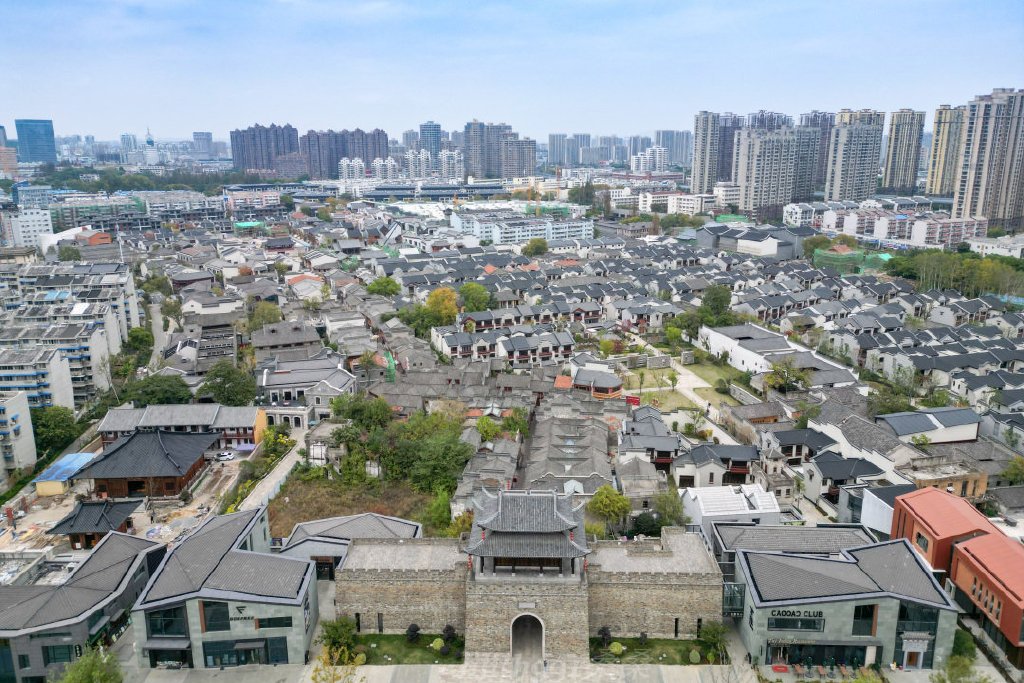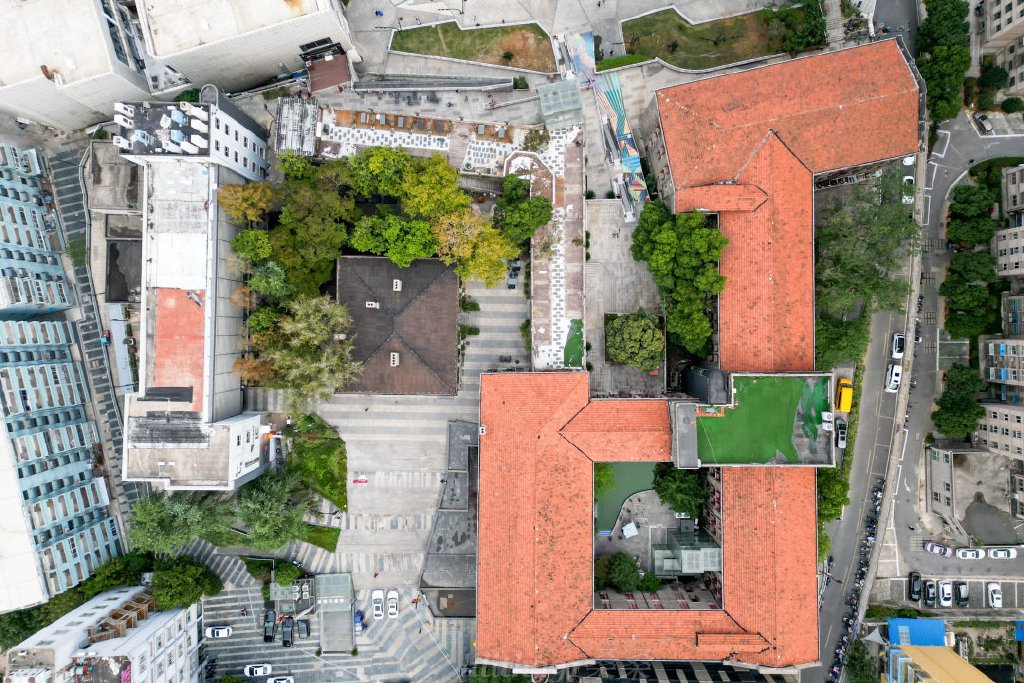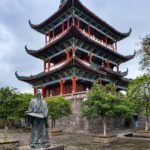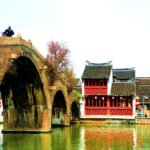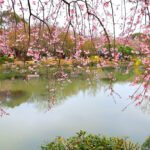Wuhu, a city with a long history, was established during the Spring and Autumn period. After Emperor Qin Shi Huang unified China and implemented the county system, it was renamed from a town to a county, obtaining the name ‘Wuhu’. Since the Southern Tang Dynasty in the Five Dynasties, the name ‘Wuhu’ has been in continuous use to this day, and it has long been known for its reputation as a ‘famous city in Jiangdong’ and ‘a famous region in Wu and Chu’. This time, I finally arrived in Wuhu and spent two pleasant days exploring the ancient city. Transportation: High-speed rail is very convenient to Wuhu. Self-driving is also a good idea, and it’s recommended for visiting surrounding scenic spots. Route: DAY1 Wuhu Ancient City (Hua Street – Geng Fuxing) – Yuge Mountain – Jingu Chun B&B DAY2 Xihe Ancient Town – Return DAY1 Wuhu Ancient City (Hua Street – Geng Fuxing) – Yuge Mountain – Jingu Chun B&B Wuhu Ancient City Wuhu’s urban area actually has a considerable number of attractions worth visiting, and Wuhu Ancient City is one of the highlights. Admission: Free and open to the public, which is really great. Time: All day, you can wander from morning to night, eat and drink, and spend a whole day without any problem. Wuhu was established as a county as early as 109 BC. Later, Sun Quan moved Wuhu City to the Jimao Mountain area within the county during the second year of Huangwu (AD 223), which is also the earliest year Wuhu was considered a ‘city’ and the prototype of ‘Wuhu Ancient City’. According to this calculation, Wuhu has a history of more than two thousand years. Interestingly, Wuhu Ancient City is divided into two areas, one is a modern district and the other is an ancient alley. In the modern district, you can enjoy a leisurely coffee and stroll, but I personally prefer the ancient alleys, strolling down the streets, looking at the old buildings, and reminiscing about history. The city is mainly composed of historical districts such as Hua Street, Nan Zheng Street, Xin Shi Street, Ru Lin Street, and Xiao Jia Lane. Now, Hua Street is one of the most bustling places. Travelers who often travel will naturally know that this is the style of Huizhou residential buildings, with shops lining both sides of the street, mostly two-story brick and wood structures, with a shop in front and a factory in the back, which is very typical. Among them, Nan Zheng Street, formed during the Wanli period of the Ming Dynasty, is Wuhu’s earliest commercial pedestrian street, and this is how a Jiangnan pedestrian street should be. Here, the alleys are crisscrossed, and each small alley is worth a detailed look, with a strong ancient charm, worth a visit, and there are many historical cultural buildings that need to be quietly appreciated and felt for the vicissitudes of history. There are also many characteristic shops in the ancient city, such as bamboo weaving shops, which are said to have been visited by many photography masters for scene shooting because the bamboo weaving products here are really delicate and exquisite, very eye-catching. There are also lantern shops, dyeing workshops, etc. Hua Street has a lot of delicious food, and you can easily find a branch of the old brand – Geng Fuxing. ‘Geng Fuxing’ was founded during the Guangxu period of the Qing Dynasty, originally located at the three street corners of Wuhu City, and was originally composed of Jiangdu Geng brothers Changhong and Changfu’s dumplings and noodles, and Wuhu Yan Kaiyin’s crispy pancake shop, forming ‘Geng Fuxing Dumpling Noodle Restaurant’.
Their business is exceptionally good. Renowned soup dumplings and shrimp noodles are naturally a must-try, along with famous delicacies such as minced meat siu mai, chicken broth dried tofu, and flaky pastries. Alas, the stomach is not capacious enough; otherwise, one should indulge in all. Yuge Shan admission: free of charge, feel free to stroll around. After wandering and tasting the ancient city, one can take a walk at Yuge Shan. Since 1887, countries such as the United Kingdom, France, and Spain have constructed a large number of Western-style buildings here, so visitors can appreciate the architecture, which is entirely different from the previous Wuhu ancient city. The main attractions include the former British Consulate, the Neisi Theater, the auditorium, the Catholic Church, the Yuge Shan wine cellar, and the Western Culture Corridor. Next, we head to Xihe Ancient Town and stay at Huazhu Jingu Spring Homestay Xihe Ancient Town Branch. Prior to visiting the homestay, a phone call was made to confirm, and the reception was very warm and friendly. The homestay is located in the heart of the Xihe Old Street, with its exterior architecture maintaining the old street’s charm, restored in a way that preserves its original state. The restoration of our country’s cultural relics is quite interesting, focusing on preserving the old rather than making it brand new. The courtyard is not large but is meticulously maintained, allowing one to feel the collision of various cultural elements, simple yet comfortable. Enjoying tea, reading, swinging on a swing, and resting for a while here is also a good idea. The rooms are spacious and comfortable to stay in. If you arrive at night, you can also take in the night view of Xihe Ancient Town. DAY2 Xihe Ancient Town admission: free entry, which is truly commendable about Wuhu, as these scenic spots are free of charge and open to the public. Xihe is a Jiangnan water town with a history of over 600 years. Interestingly, due to annual flood control and embankment reinforcement, the house foundations are about 1.5 meters below the road surface, meaning many buildings are situated below street level. The central street is paved with bluestone, winding for about 1200 meters, with the street running north to south, varying in width from 2 to 3 meters, and shops on both sides with eaves facing each other. With black tiles and white walls, it still carries the charm of Jiangnan. Many locals enjoy bringing their children here, as it is less crowded, beautiful, close to water, with flower seas and reed marshes, offering a tranquil and distant feeling rarely seen in cities. The place is rich in local flavor, not overly commercialized, just like the ancient towns we used to love. If you want to find some peace, this is the right place. Two days and one night, walking, looking, and eating, time flies by, and the weekend is over. Wuhu, an ancient city with its own stories, awaits visitors to discover and explore.
